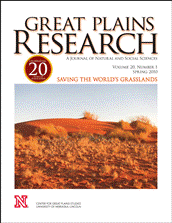Center for Great Plains Studies

Great Plains Research: A Journal of Natural and Social Sciences (through 2013)
Date of this Version
Fall 2002
Document Type
Article
Abstract
Defining ecogregions as "relatively large areas of land or water that contain a geographically distinct assemblage of natural communities," this book documents the efforts of the World Wildlife Fund-United States to identify areas with aquatic habitats in the United States, Canada, and Mexico that support "globally outstanding biological diversity." Public and private conservation groups can then focus their efforts on preserving the aquatic ecosystems of the most globally significant areas.
The book opens with its authors' discussion of their use of a biological distinctiveness index, focusing on fish, mussels, and crayfish species, to delineate the ecoregions of North America. Much of the information used to evaluate and rank ecoregions is based on expert opinion. Environmental threats and the conservation status of each ecoregion are then evaluated. Finally, ecoregions that are highest priorities for conservation because of their global significance are identified. Ecoregion-based conservation approaches are advocated in the last chapter, the authors arguing that evaluation within an ecoregion should focus on distinct habitats, large examples of intact habitat, keystone habitats, and large-scale ecological phenomena (such as animal migration). This ecoregion-level assessment, however, should be initiated first in those ecoregions that have been identified as globally outstanding.


Comments
Published in Great Plains Research 12:2 (Fall 2002). Copyright © 2002 Center for Great Plains Studies.